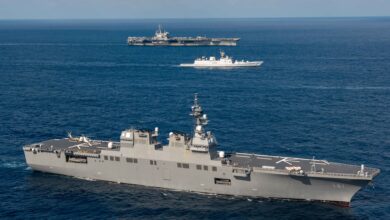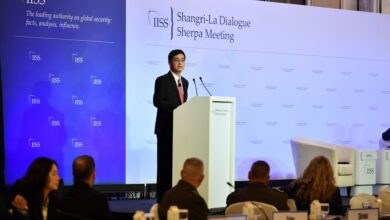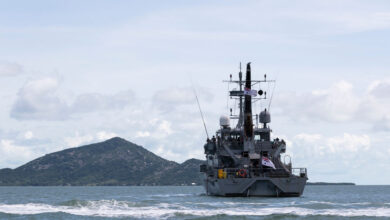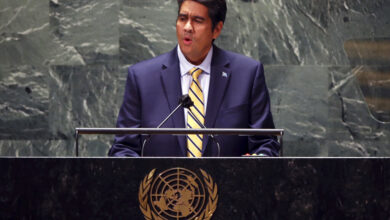As PRC encroaches, Australia and Vietnam defend maritime sovereignty

As the People’s Republic of China (PRC) continues its maritime intrusions of Vietnam’s exclusive economic zone (EEZ) in the South China Sea, defense relations between Vietnam and Australia are growing stronger.
In July, August and September 2019, Chinese vessels tied to the country’s fossil fuel industry persistently maneuvered through Vietnamese waters, provoking a response from the Vietnam People’s Navy. Beijing’s actions echoed a pressure campaign in 2018 that forced Hanoi to cancel an oil-drilling project in its waters with Spanish energy firm Repsol.
Australian Prime Minister Scott Morrison and Vietnamese Prime Minister Nguyen Xuan Phuc made clear their opposition to such activities in Indo-Pacific waters in a joint statement following their August 23, 2019, meeting in Hanoi.
“The prime ministers expressed serious concerns about developments in the South China Sea, including land reclamation and militarization of disputed features,” the joint statement said. “They also expressed concern about disruptive activities in relation to long-standing oil and gas projects in the South China Sea. They emphasized the importance of freedom of navigation and overflight, compliance with international law and maintaining a rules-based order. They called on all parties to exercise self-restraint and avoid actions that may further complicate the situation.”
In light of the PRC’s aggression in Vietnam’s EEZ, Australia has been lending support to Vietnam.
In March 2018 the two countries signed a strategic partnership that included mutual commitments to “international law and each other’s sovereignty, independence, territorial integrity and respective political systems,” and “to work intensively to ensure that our region remains peaceful, resilient and shaped by the rules and norms that have prevailed for decades.”
In November 2018, they announced the signing of a joint vision statement on defense cooperation during a meeting of their defense ministers in Sydney to “guide the expansion of defense cooperation between Australia and Vietnam in areas such as maritime security and peacekeeping cooperation,” according to Australia’s Department of Defence.
A pair of warships from Australia’s Indo-Pacific Endeavour 2019 task force then made a port visit to Vietnam’s Cam Ranh Bay in May 2019, where members of the armed forces of both countries engaged in joint activities. (Pictured: Royal Australian Air Force Air Commodore Richard Owen, commander of Joint Task Force 661, left, greets military leaders from the Vietnam People’s Army when the HMAS Canberra arrived in Cam Ranh Bay, Vietnam.)
In the midst of these deepening defense ties with Canberra, Hanoi has been demonstrating resolve to counter Beijing’s bullying tactics in the South China Sea. This has included proposing bans on both the PRC’s construction of artificial islands and its fortification of them with missiles and other weapons, as well as a ban on blockades that restrict another country’s vessels, reported Carl Thayer, a professor at Australia’s University of New South Wales.
Moreover, when the Haiyang Dizhi 8, a ship operated by the China Geological Survey, sailed into Vietnam’s EEZ in mid-July 2019, the Chinese survey ship and its accompanying armed flotilla were greeted by nine Vietnamese naval vessels, Reuters reported. The Chinese vessels eventually retreated.
At their August 2019 meeting in Hanoi, Phuc and Morris emphasized the need for Indo-Pacific countries to peacefully adhere to the United Nations Convention on the Law of the Sea (UNCLOS), which clarifies how a nation’s territorial waters are defined, along with the management of marine natural resources.
“The prime ministers underscored the importance of UNCLOS dispute settlement mechanisms and called upon the parties to respect and implement the decisions rendered by these mechanisms,” the joint statement said.
Tom Abke is a FORUMcontributor reporting from Singapore.x




